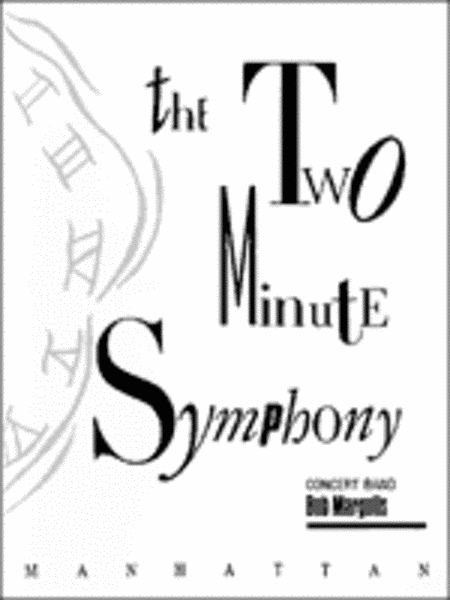The Two-Minute Symphony
-
Ships in 4 to 6 weeks
Details
Description
SKU: MH.0-931329-39-6
Composed by Bob Margolis. Suitable for elementary and middle school bands. Conductor score and set of parts. Duration 2:00. Published by Manhattan Beach Music (MH.0-931329-39-6).ISBN 9780931329395.
Can there be a two-minute symphony? This work is certainly two minutes, and it does sound like a symphony because there are symphonic elements in it: It has a clearly-stated theme, which is developed, fragmented, plopped into minor, extended, kneaded, and recapitulated. Fiddled with, actually -- like Beethoven, only smaller. Therefore, many of the makings and trimmings of a symphony are here, and even though there is not enough time for a secondary theme, we are clearly in proto-symphonic territory. For your class, have the players find the theme of the work (play it for them on piano, too). Note that the theme is not only melodic (m. 9-24), but motivic -- quarter, eighth-eighth quarter -- both of which are changed (developed). For example, measures 27-30 resemble 9-12. For the class: How are these measures similar, how do they differ? Where does the melody at measure 44 come from? Does it relate more closely to the theme as first stated (m. 9), or to the second version (m. 27)? How is the melody (marked Melodia) at measure 52 similar to and different from the opening theme (m. 9)? What happens at measures 58-62. (And where else have you heard measures 96-103?) PS: There are no absolute answers; encourage discussion. The purpose is not so much to teach your class symphonic form, this being an advanced topic and Mozart being a better model, but rather to get them to listen to what is happening in the music. If they can form some ideas of their own of where the musical ideas come from, and how they relate to previous ideas in the work, they will have begun to develop important tools for critical listening. As an aside -- sometimes children are interested in knowing how the composer decides what he or she is going to write. Some of us plan things out in advance, but I prefer to improvise. This means that I listen to what I play and see what it suggests, write down that, and see what it suggests. Much of the "symphonic"development was improvised on synthesizer. I had a great deal of fun composing it and hope you do in playing it. Ensemble instrumentation: 4 Flute 1 & Piccolo, 4 Flute 2, 1 Oboe, 1 Bassoon, 6 Bb Clarinet 1, 6 Bb Clarinet 2, 2 Bb Bass Clarinet, 4 Eb Alto Saxophones, 2 Bb Tenor Saxophone, 1 Eb Baritone Saxophone, 4 Bb Trumpet 1, 4 Bb Trumpet 2, 3 Horn, 7 Trombones & Euphonium (B.C.), 2 Euphonium (T.C.), 4 Tuba, 1 Timpani, 3 Percussion 1, 3 Percussion 2.

 Share
Share